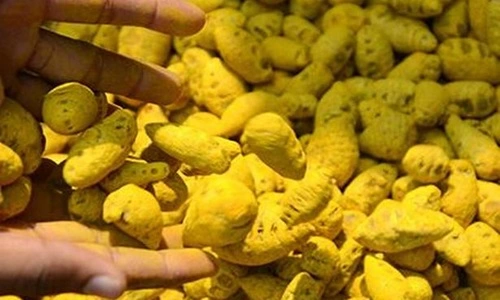Oranges are for sure among the most favorite fruits of millions of Indians, right? But do you know, the orange you crave the most, where does it actually grow or come from? Well, the thing is, there are many states that focus on orange farming, which means, we just do not depend on imports. And if that has got you intrigued already and your mouth is watering, then let’s get to know about the top 5 most orange producing states in India as of 2024. Here we go.

1. Maharashtra (692,000 tonnes)
Maharashtra is at the top in India for growing oranges, mainly in the Nagpur area. The unique kind of oranges from this place is world-famous. Sweet and juicy inside but a bit rough on the skin. They are called Nagpur Oranges and are of pretty local importance since these were given special status in April 2014. It is status that protects their quality and increases farming of the same in the area. Nagpur sees two main picking times: the Ambiya season from September to December, which has a slightly tangy taste, and the Mrig season in January, known for being sweeter. In these seasons, Maharashtra together produces a huge amount of oranges, amounting to 692,000 tons per year.
2. Madhya Pradesh (237,000 tonnes)
Madhya Pradesh is another big orange producer in India, especially in the Chhindwara district, with 237,000 tonnes of oranges. This is more so from the Chhindwara district, which is known to produce 237,000 tonnes of oranges. The oranges from this area are now called Satpuda oranges. All this has come a long way in differentiating these oranges from Nagpur, and the brand name has now become part of the wider plan to popularize local produce. The Chhindwara oranges have a thin skin and are sweeter, particularly favored by big companies. The area has large orange farms covering 25,000 hectares, which is important for the local people and helps send oranges to other places, including Bangladesh.
3. Assam (83,000 tonnes)
Assam produces 83,000 tons of oranges every year, which is the third largest next to Nagpur. It plays the most important role in the country’s orange market. Due to the wet weather in Assam, oranges get grown up, tasting a bit sweet and sour, unlike those oranges grown in central India. This state helps meet the local need for oranges and supports many small farmers.
4. Rajasthan (48,000 tonnes)
Rajasthan is known for its dry and deserted lands, but still it produces 48,000 tonnes of oranges. However, farmers of that region have worked on the rearing process for this variety of oranges that will do well in tough, dry soil and won’t require much water. These oranges have tough skins, making them good for shipping long distances. Growing oranges in Rajasthan helps keep farming going in this dry area.
5. Meghalaya (37,000 tonnes)
Meghalaya grows 37,000 tonnes of oranges every single year, steadily as well. Hilly and cool conditions of the area favor growing a special type of orange, and the high and cool places in Meghalaya mold the taste and feel of its oranges when they are grown. This makes these oranges different and adds variety to India’s orange production.
FAQs
Q1. When did oranges come to India?
Ans: Oranges were first grown in Asia, mainly in what we now call southeast China. They have been grown in India for over 7,000 years and in China since 2500 BCE.
Q2. What is the tastiest orange in the world?
Ans: The Valencia Orange is known worldwide as the tastiest orange. It’s great taste comes from the special climate and location where it grows.
Q3. Which Indian city is famous for oranges?
Ans: Nagpur is a city famous for its oranges. Located in Maharashtra, it is the third biggest city in the state, after Mumbai and Pune.
Q4. Do oranges grow in Kerala?
Ans: Yes, oranges do grow in Kerala. They are mainly grown together with tea on the tea estates in places like Munnar, Thalayar, and Chatta Munnar.
Q5. Which country is the biggest in terms of orange production?
Ans: Brazil is the top country in orange production, making up 30% of the world’s total. Most of Brazil’s oranges are grown in Sao Paulo, and 99% of these oranges are sent to other countries.
Related Topics:
- Top 5 Most Mango Producing States In India
- Top 5 Most Sugarcane Producing States In India
- Top 5 Most Banana Producing States in India
- Top 5 Most Apple Producing States in India
- Top 5 Most Coconut Producing States In India

